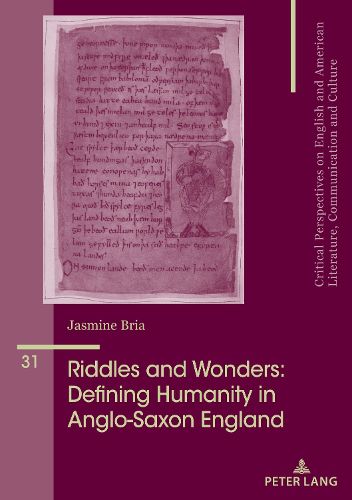Readings Newsletter
Become a Readings Member to make your shopping experience even easier.
Sign in or sign up for free!
You’re not far away from qualifying for FREE standard shipping within Australia
You’ve qualified for FREE standard shipping within Australia
The cart is loading…






This title is printed to order. This book may have been self-published. If so, we cannot guarantee the quality of the content. In the main most books will have gone through the editing process however some may not. We therefore suggest that you be aware of this before ordering this book. If in doubt check either the author or publisher’s details as we are unable to accept any returns unless they are faulty. Please contact us if you have any questions.
Throughout the history of human civilization, the definition of the animal and its relationship to humans have been contentious issues. This book investigates the notion of what constituted an animal in Early Medieval English culture as well as how the animal-human interaction is portrayed in the Anglo-Saxon literary corpus. In this regard, the animal's portrayals in the Exeter Book Riddles and of monstrous creatures in the Wonders of the East provided a fertile field for research because these texts, rarely connected to allegorical readings and offering viewpoints that might be seen as complementary, deal with fundamental issues regarding what it meant to be human for Early Medieval English society.
This study offers fresh insights into the characters and themes explored in the Exeter Book collection and in the Wonders of the East, looking for the spaces of Anglo-Saxon thought in which animality and humanity appear to meet. The author not only discovers the peculiar features in the definition of humanity with regard to animal and non-human figures, but is able to demonstrate that a strong anthropocentric vocation can coexist with an outlook that recognizes a close affinity among different species.
$9.00 standard shipping within Australia
FREE standard shipping within Australia for orders over $100.00
Express & International shipping calculated at checkout
This title is printed to order. This book may have been self-published. If so, we cannot guarantee the quality of the content. In the main most books will have gone through the editing process however some may not. We therefore suggest that you be aware of this before ordering this book. If in doubt check either the author or publisher’s details as we are unable to accept any returns unless they are faulty. Please contact us if you have any questions.
Throughout the history of human civilization, the definition of the animal and its relationship to humans have been contentious issues. This book investigates the notion of what constituted an animal in Early Medieval English culture as well as how the animal-human interaction is portrayed in the Anglo-Saxon literary corpus. In this regard, the animal's portrayals in the Exeter Book Riddles and of monstrous creatures in the Wonders of the East provided a fertile field for research because these texts, rarely connected to allegorical readings and offering viewpoints that might be seen as complementary, deal with fundamental issues regarding what it meant to be human for Early Medieval English society.
This study offers fresh insights into the characters and themes explored in the Exeter Book collection and in the Wonders of the East, looking for the spaces of Anglo-Saxon thought in which animality and humanity appear to meet. The author not only discovers the peculiar features in the definition of humanity with regard to animal and non-human figures, but is able to demonstrate that a strong anthropocentric vocation can coexist with an outlook that recognizes a close affinity among different species.